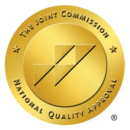According to research from 2018, 26% of people globally experience stress at least once a week. Just like a substance use disorder, stress is a health condition. Boundaries help everyone set a pace for self-care.
Setting boundaries in recovery is one of the most essential actions a person with a substance use disorder can take. Facilities that specialize in substance use recovery put this as one of the first things to do on the agenda because of its importance.
What Are Boundaries In Recovery?
In short, boundaries are a set of personal rules that one establishes with other people. When those rules are broken, boundaries allow one to take action with good reason. So, boundaries in recovery mean how a person with a substance use disorder needs to be treated during this period of time.
This could mean not pressuring them to drink. For another, it could be not inviting them to places where there will be drugs and alcohol. These personal rules can change depending on a person. They might even change as a person recovers fully (and that’s okay). Boundaries in recovery promote a healthy relationship with others and with oneself.
Importance of Setting Boundaries With Friends and Family In Recovery
To begin, every person has friends and family that care about them. Of course, even when someone has a substance use disorder, they care about their loved ones. Yet, sometimes the desire to keep loved ones happy interferes with recovery. Setting boundaries with friends and family during recovery is important for multiple reasons:
- It preserves everyone’s sanity on both ends
- Boundaries in recovery allow for important self-care time
- Friends and family can’t know what hurts a person in recovery if left unsaid
- It weeds out toxic people from those who truly care about them
- Boundaries in recovery let a member of a treatment facility put their physical and mental health before everything
- It’s a good practice of self-discipline
- Boundaries in recovery strengthen relationships
- It lets a person be content in what they already have
Further, let’s go into detail about these points. It’s hard to say no to plans. Fear of missing out (also known as FOMO) plays on people’s sense of self-security. They feel that what they are doing in life at that present moment isn’t good enough. However, setting boundaries during recovery puts mental health first in terms of someone suffering from a substance use disorder and the people that care about them.

For instance, it’s frustrating and self-destructive to agree to plans that will ultimately hurt in the end. This deprecates a person’s mental health. In turn, they are likely to lash out at the person who invited them out or is contacting them. It’s a vicious cycle that hurts the psyche of both parties involved. Especially because they don’t understand the sentiment behind the reaction.
Yes, it’s difficult to put that into words. Generally, the more a person practices this form of self-discipline, the easier it becomes. It benefits everyone in the end.
Why Setting Boundaries With Friends Who Still Use Is Essential to Recovery
To continue, it’s already hard to set boundaries in the first place. What happens when the ultimate temptation is thrown into the mix? Setting boundaries with friends during recovery is different when it comes to those who still actively use drugs and alcohol. At the end of the day, it positively serves a person recovering from a substance use disorder and their friend who uses.
In other words, cutting ties with a person who uses will sever the temptation of relapse. With this, studies show that the majority of people with a substance use disorder will relapse, according to the National Institute on Drug Abuse (NIDA). The thought won’t cross their mind as much because they won’t be reminded of the times where they used substances. On the other hand, the friend who still uses will be encouraged to get help for their substance use disorder.

Here are a few helpful examples of what to say to a friend who still uses:
- “I care about you, and that’s why I can’t see you while I recover.”
- “At the end of the day, recovery is my priority. Yours should be too.”
- “I think you should check out this treatment center before we try to hang out again.”
- “I would love to hang out with you once you get help.”
- “Substance use disorder is a medical illness, so it requires me to put recovery first.”
Continuing, clearly, it’s not a fun conversation to have. But, friends who still use are the people who need personal boundaries the most. A person who suffers from a substance use disorder might throw away all their hard work hanging out once. When someone sets boundaries, they put themself first and their friends too. Even if their friend doesn’t realize it.
How To Start Setting Boundaries In Recovery
According to the National Institute of Mental Health (NAMI), boundaries are a form of self-care. When someone practices self-care they take the necessary steps to preserve their health. This is particularly applicable to those who wish to recover from a substance use disorder. Though, there is an opposing side. That side is the monkey brain that tells a person with a substance use disorder that they can hang out with whoever they want and do whatever they want. If not, they will miss out on relationships and important events.
In reality, this is an irrational thought. They won’t be able to enjoy hanging out with loved ones or at social gatherings where relapse is a temptation. This is because they will either be worried about finding themselves back at square one.
Another scenario is they won’t worry about it at all and will end up back in the tendrils of drugs and alcohol. In part, this is because drugs and alcohol are socially acceptable. In 2012, NIDA found that 9.2% of the American population used an illicit drug. It’s so prevalent that individuals with a substance use disorder need to follow these steps to start setting boundaries in recovery.
5 Basic Steps To Start Setting Boundaries in Recovery
- Figure out stressors. People can’t set boundaries if they don’t understand what stresses them out in the first place. Individuals recovering from a substance use disorder should tally situations where it might stress them out. Additionally, they should write down situations where they feel vulnerable to relapse.
- Establish what boundaries should be set up. So, they have figured out what scenarios where they need to put their foot down. Now what? It’s essential to have a game plan on what to do when a boundary needs to be set. What will they say? How will they react when a personal rule is broken? Figuring these out beforehand will save a headache and possibly much worse.
- Practice saying no. In addition, practice saying no with no further explanation. Setting boundaries in recovery is healthy and perfectly normal. When an individual with a substance use disorder needs to enforce a boundary there needn’t be an extra explanation. Everyone is entitled to what makes them uncomfortable.
- Set boundaries on how loved ones speak to you. Everyone with a mouth has an opinion. When a boundary is set sometimes people may act in a way that adds stress to the situation. For example, they may offer advice on something they have never experienced. It might be along the lines of how to avoid a relapse in a social setting, to coax someone in recovery into going to a bar. Those with a substance use disorder need to kindly remind them that they know themself better than their friend.
- Schedule self-care into the day. Set time aside to preserve mental and physical health. When a friend or family member tries to convince them otherwise, a person in recovery needs to explain that this is more important.
Resources On Setting Boundaries in Recovery
There is a wealth of information on how to set boundaries. While they may not say they are for setting boundaries in recovery, they can still provide insight. However, there are plenty of resources online and for free specifically about personal rules for recovery.
These are some places to find them:
- The library
- YouTube
- Book stores
- Resources online (NAMI and NIDA)
The only thing to keep in mind is to make sure the source is credible. A random person on the Internet can put up a page about setting boundaries in recovery. So can a doctor who specializes in recovery. Just make sure you’re looking at resources from governmental agencies and specialists.
Other Healthy Habits To Practice Along With Setting Boundaries in Recovery
Setting boundaries during recovery is only one portion of permanently kicking a substance use disorder. NAMI recommends improving physical wellbeing in order to enforce boundaries. The mind is a part of the body. If the body isn’t in the right shape to recover, then the brain won’t be able to either.
Make sure to combine healthy boundaries with these healthy habits to ensure success.
Exercise Frequently
Physical activity has multiple benefits. For one, it can boost someone’s confidence because they will look and feel better. Scientifically, they will feel better because exercise cuts hormones that involve stress. Also, it boosts ones that have to do with happiness and serenity. Come up with an exercise routine and say no to plans that interfere with it.
Eat a Nutritious Diet
Good nutrition is packed with vitamins and minerals that naturally help with withdrawal symptoms. In addition, like exercise, a good diet can make a person look and feel better. This could be another boundary to set. If a friend asks to eat out at a restaurant, politely decline. Health in recovery is necessary.
Get Enough Sleep Every Night
Sleep is crucial to cognitive function and to sustain an elevated mood. Recovery is extremely difficult, especially during the early stages. Try to get seven to nine hours of sleep every night.
Engage in Mind-Body Activities
Yoga and tai chi are mind-body exercises, otherwise known as moving meditation. Strengthen your mind and body at the same time with one of these. Set time aside every day to practice, even if it’s only for 15 minutes. Don’t let FOMO take away from healing activities like these.
A part of setting boundaries in recovery is understanding what is important. Healthy habits should be one of them. Then, one can be in the right shape to recover. Take the time to figure out what healthy habits are feasible every day. After, set boundaries to ensure that they happen. Without a plan of action, it just won’t happen.
Discovery Institute Teaches How To Start Setting Boundaries in Recovery
Ultimately, a substance treatment center is the best way to figure out what boundaries to put down. A person recovering from a substance use disorder might need a little extra help setting boundaries in recovery. Having an unbiased, clinical view can help establish them and stick with them, too.
At Discovery Institute, we provide programs to help members establish healthy habits, like setting boundaries in recovery. We know setting boundaries with friends and family can be difficult. Contact us now to learn how to adapt healthy behaviors to erase a drug dependency.



